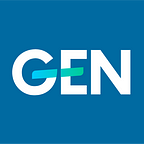Automated visuals with Frames
Frames allows publishers to easily enhance more than 50% of their articles with charts. They won the ‘Enhance your content automatically’ battle of our Startups for News competition. They will pitch at the GEN Summit 2018 in front of over 750 editors-in-chief, senior executives, media innovators, and startup founders from 70+ countries. We asked the team a few questions about their startup.
What did you do prior to launching Frames?
This project was born within observador.pt’s newsroom, where I am also the technical and design director. Previously I designed the current iteration of independent.co.uk.
What problem are you trying to address for newsrooms?
We (the newsrooms) all want more visual, compelling articles that make good use of data. Time pressure in newsrooms, lack of appropriate tools, and information caught inside article silos are all roadblocks we solved with Frames. The keyword is scale: our solution brings simple charts to 50+% of articles you publish. And while we were at it, we also created a way to generate additional revenue.
How are you attempting to solve the problems described above?
Time pressure is solved by outsourcing the data visualisation team. We continuously observe the news stream and proactively create Frames (our hip name for charts) that give context to current world events. And when your journalists write an article, we automatically suggest and insert related Frames.
We fixed the lack of appropriate tools with an easy to use chart builder that integrates right into the CMS. And every chart created is automagically fully on brand and available for reuse in other articles. That’s not unique, but what is, is that most journalists will never need to use this tool in the first place.
Article silos are no more because our Frames, focused on the wider context of articles, are reused across publishers and even within publishers across dozens of articles about the same topics. The effort of chart creation is externalised and has finally an amazing economy of scale, allowing for massive coverage (more than 50% in our case study).
A new revenue stream in the form of text-based sponsorship ads under relevant Frames have proven to be a desirable format for brands keen on using user-friendly and ads that integrate right into the content. In our case study, we quickly amassed very relevant revenue for the publisher with big brands like Vodafone and Deloitte, among others.
What sets you apart from your competitors? List three elements.
Frames is a unique combination of features. What differentiates us most is:
1) Automatic matching is a game changer that allows for massive article coverage;
2) Outsourced data gathering and chart designing team avoids training and enables economies of scale;
3) A new revenue stream makes this into a no-brainer for publishers.
What is your business model?
We charge publishers a fee for this service which they can recover many-fold by exploring the new revenue stream.
What are your next steps?
The product is fully implemented and generates very good KPIs on our launch customer. A/B testing consistently proves higher number of time on site, shares, and returning sessions for users exposed to Frames. Also proven is a significant revenue generation, allowing our customer to retrieve their investment manyfold. With this we are now hard at work to onboard more publishers.
